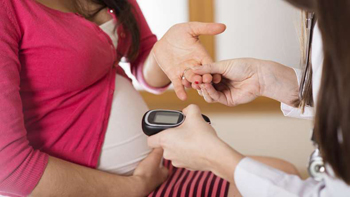Washington, Nov 11: Higher levels of iron in pregnant women may lead to an increased risk of gestational diabetes, a new study has warned.
 The study by researchers from US National Institutes of Health (NIH) also raises questions about routine recommendations on iron supplementation in pregnancy.
The study by researchers from US National Institutes of Health (NIH) also raises questions about routine recommendations on iron supplementation in pregnancy.
Iron is regarded as a double-edged sword in living systems, as both its deficiency and excess can be harmful, researchers said.
While many guidelines recommend screening and treatment only as necessary for iron deficiency, several other groups such as the World Health Organisation (WHO recommend routine iron supplementation among pregnant women.
Emerging evidence has pointed to a possible link between higher iron stores and abnormal blood sugar control (including type 2 diabetes) in non-pregnant individuals.
Researchers did a case-control study of 107 gestational diabetes (GDM) cases and 214 controls (matched on age, gestational week of blood collection and race/ethnicity).
They looked at several biomarkers of iron status, including plasma hepcidin, ferritin, and soluble transferrin receptor (sTfR), and these data were used to calculate the sTfR:ferritin ratio, which captures both cellular iron need and availability of body iron stores.
These markers were longitudinally measured or calculated four times during pregnancy, twice before GDM diagnosis (gestational weeks 10-14 and 15-26), and twice afterwards (gestational weeks 23-31 and 33-39).
GDM diagnosis was ascertained from medical records based on oral glucose tolerance test results.
Statistical modelling was then used to calculate the odds ratio of GDM with iron status, accounting for factors such as demographics, pre-pregnancy body mass index (BMI), and other major risk factors.
Researchers found that for both hepcidin and ferritin, in the second trimester of pregnancy, those in the top 25 per cent of levels of these markers had around a 2.5 times increased subsequent risk of developing GDM compared with those in the bottom 25 per cent.
Similar findings were observed for ferritin levels in the first trimester. Describing the findings as biologically plausible, researchers offer various potential explanations.
Iron may play a role in the development of GDM through several potential mechanisms. As a strong pro-oxidant, free iron can promote several cellular reactions that generate reactive oxygen species and increase the level of oxidative stress.
Oxidative stress induced from excess iron accumulation can cause damage to and death of pancreatic beta cells which produce insulin and consequently, contribute to impaired insulin synthesis and secretion.The study was published in the journal Diabetologia.





Comments
Add new comment